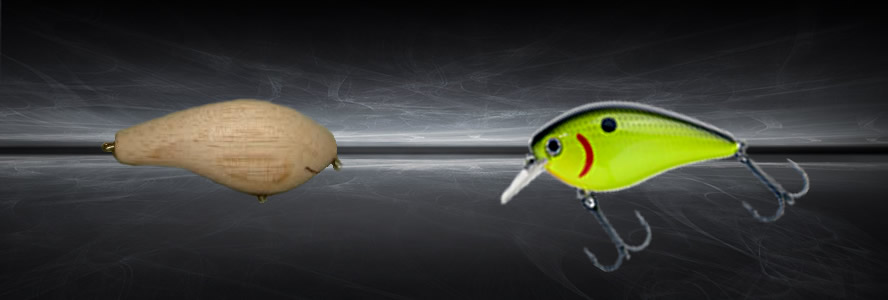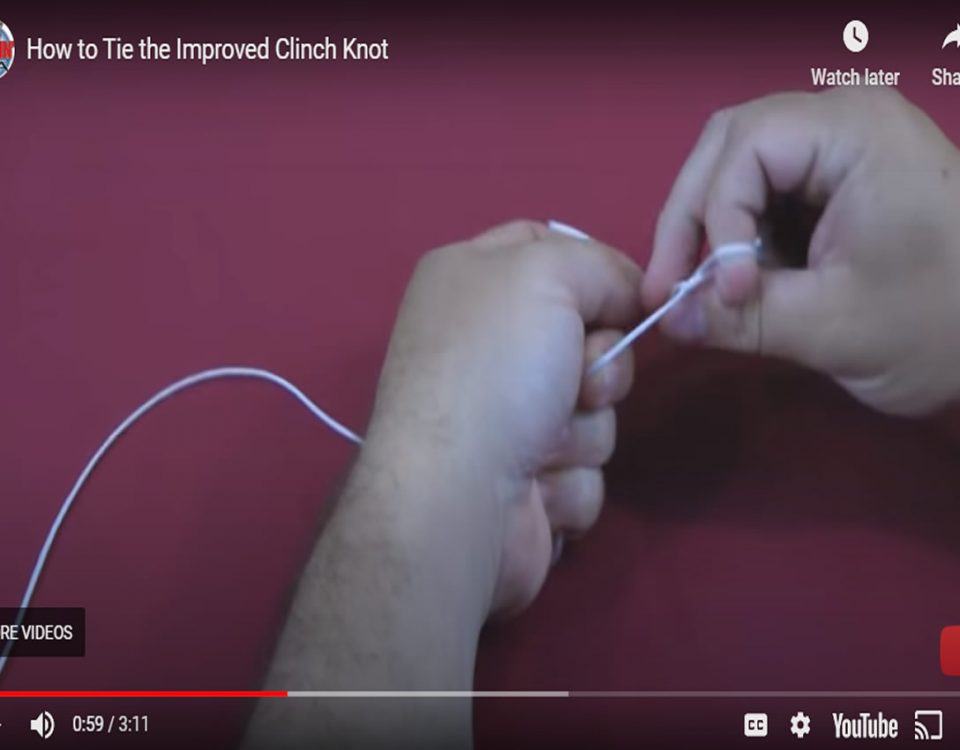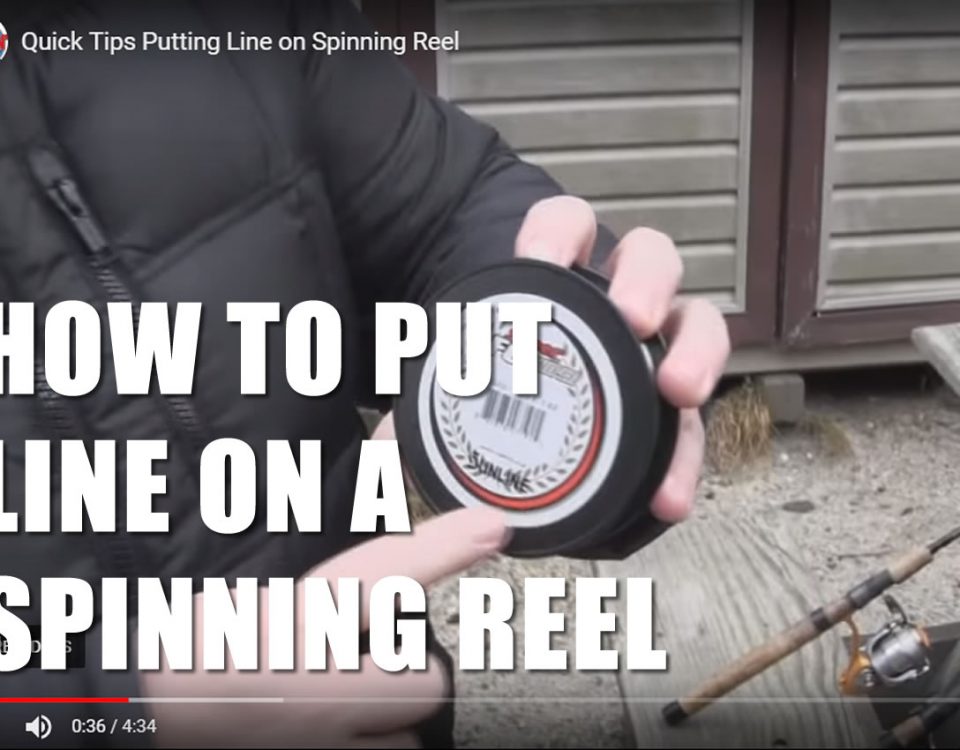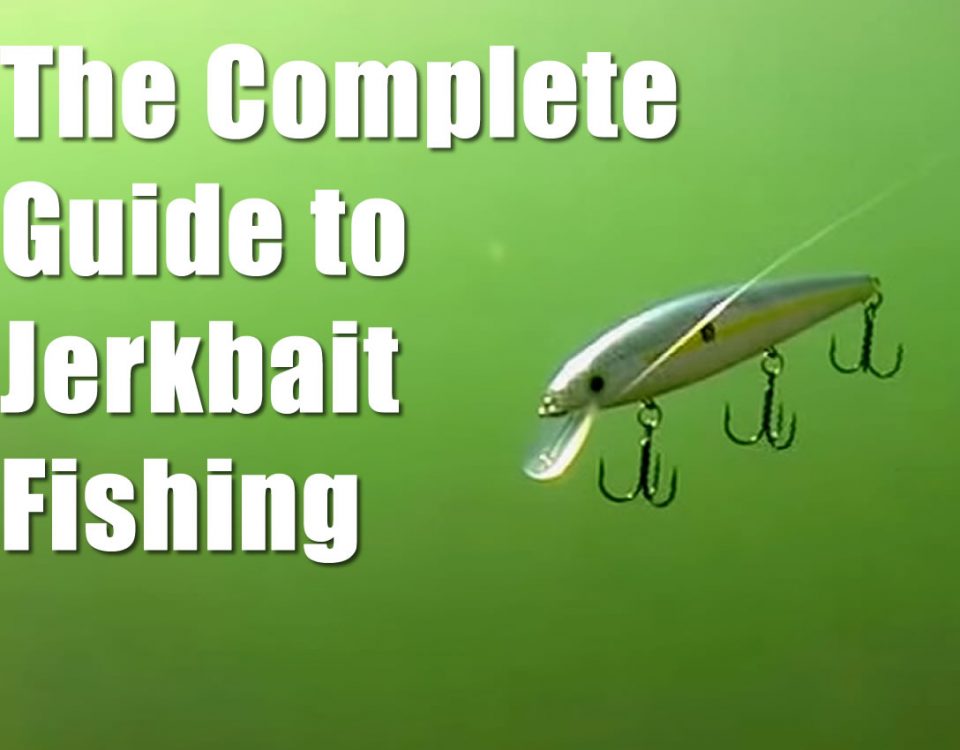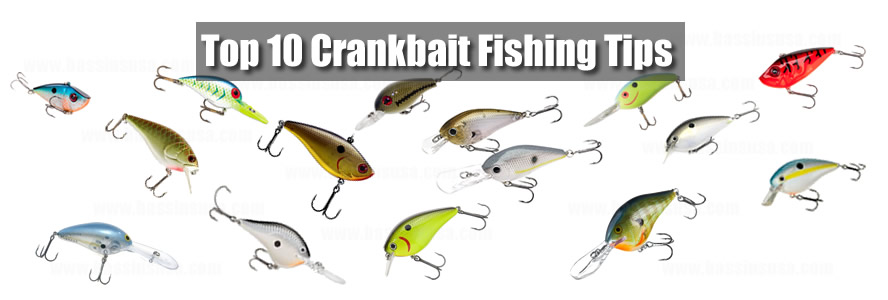
1. Two basic types – Lipped and Lipless

Any crankbait that has a bill extending from the lure we classify as a “Lipped” crankbait. Simply put, Lipless crankbaits are the ones that don’t have a bill extending from the lure. Why choose one over the other? Here are a few key factors to consider:
Depth of water: Although you can fish a lipless crankbait deep, they generally are best used in shallow water, or in water up to 12’ deep. If you want to cover specific depths of water and have the crankbait digging into the bottom and cover, you’ll want to use a lipped crankbait.
Vegetation: One of the places where the lipless crankbait really shines is around crisp weeds like milfoil. Since these lures do not have a bill, they don’t dig into dense weeds like a lipped crankbait does. This gives you the ability to make contact with weeds and then rip the lure free when the hooks make contact with grass. The action of ripping the lipless crankbait out of the grass is key to triggering strikes.
Heavy Cover: When fishing cover like wood, brush piles, blown-down trees, etc. the billed crankbaits are the right tool for the job. You can pinpoint the perfect depth and when the crankbait gets down into the tangles of branches, you simply pause your retrieve and allow the crankbait to float back out of the cover. A lipless crankbait will not do this.
2. Plastic or Wood
So what’s the right choice and why? Here are some things you need to consider:
Buoyancy (Floating & Suspending) – Balsa wood crankbaits float to the surface faster than plastic crankbaits. If you are fishing around heavy cover as mentioned above, a balsa crankbait may be the better choice, especially when fishing in shallower water. They just back out of cover so well. Plastic crankbaits also do a great job in the shallow water too. When cranking deep structures, plastic crankbaits are really the top performer. There are also suspending crankbaits that are designed to suspend when you pause. This can be effective in open water situations and also when targeting suspended bass that are further down in the water column, or when suspended bass are looking for more of a typical crankbait shape (rather than a jerkbait shape).
Depth – If you want to get a crankbait down and have it stay down in water over 12’ deep, a plastic crankbait is the better choice for the job. When you’re looking to make a presentation really deep water over 18‘ or longlining a crankbait down into the 30’ plus range… plastic crankbaits are a must!
Distance – In general plastic crankbaits can be cast farther than balsa crankbaits. If you need to cast long distances (especially into the wind) the plastic crankbaits are going to perform much better than balsa.
Durability – Balsa baits need a little T.L.C. whereas you can typically be a bit rougher with your plastic crankbaits without causing damage. For example in areas with weeds, it’s much more efficient to slap the lure against the surface of the water to remove any weeds from the bill and hooks than it is to pick it off by hand. If you do this all day with a balsa bait, you stand a good chance of ruining the bait.
3. Wiggle vs. Wobble
The two factors that contribute to whether a crankbait has a wiggle action or a wobble action is the shape of the body and the shape of the bill (or lip). A wiggle action has a tighter side to side motion whereas a wobble action has a greater side to side motion.
Body Shapes
Fat – The fatter the lure body the more wobble it will produce
Thin – Thinner lure bodies produce a tighter wiggle action
Flat vs. Curved sides – Crankbaits with flat sides produce an even tighter wiggle action than thin lures with curved sides
Bill Angles and Shapes
Angle and Length – Longer bills with a straight angle that comes out from the nose of the crankbait are designed for deeper diving. Shorter bills that are angled downward from the nose of the lure will dive shallower.
Wide & Square - The wider the bill is on a crankbait, the more wobble it will create. Wider bills also help deflect the crankbait off of cover and structure and help reduce snagging.
Narrow – Like thin body shapes, narrow bills contribute to tighter wiggling action.
4. Line Diameter and Depth
The thinner the line diameter, the deeper you can get a crankbait to dive. Also, the fluorocarbon line will help get a crankbait down quicker and help it stay down longer. On the flip side, if you’re fishing ultra-shallow with a big square bill crankbait, using 20 lb test monofilament will actually help you keep the lure from diving too deep.
TIP: Line selection is key when you are looking to fine-tune your crankbait presentation.
5. Silent or Noisy
Crankbaits that make noise can help draw attention to your lure from a distance. Bass can also sense the vibration of your crankbait through their lateral line and that can trigger a feeding response. I’ve heard Kevin Van Dam state that “after the school gets used to a rattlin’ lure I’ll switch to a silent model of the same crankbait and it will get that school fired up again" He’s also stated that “switching between a rattling model and a silent model can keep a school active all day”.
6. Tuning a Crankbait
TIP: If you have a crankbait that doesn’t have a split ring attached at the line tie, you’re going to want to add one. Split rings help by allowing your crankbait to wiggle and wobble freely as you retrieve it. Don’t overlook this small, but important detail.
TIP: I keep a black sharpie marker in my crankbait box. When I catch one quality bass on a crankbait, I’ll put one small dot under the chin of the lure. If I catch another, I’ll add a second dot. If it catches a big bass, I’ll add a third dot. You’ll be surprised how many of your crankbaits never make it to 3 dots… even after you tune them. You can sell the “no dot specials” on eBay. ;)
Sometimes a crankbait needs to be manually tuned to get the bait to run true. Most experienced crankbait fishermen will tell you that the best crankbaits are the ones that track a bit from side to side randomly. There are times, however, when a lure can be so far out of tune that it will actually flip over or run way up on its side and not dive. Here’s a video with David Fritts explaining exactly how to tune your crankbait.
7. Size and Color Selection
First, always try to match the size of your crankbait to the size of the forage that bass are targeting. Next, when it comes to color, think natural colors that most closely match the forage in clear water and attracting or accent colors when fishing stained water. You can also experiment with making custom tweaks to your crankbaits by adding color accents, adding a red hook, etc.
Here’s a quick video on color selecting from Kevin Van Dam.
8. Rod Selection
Choosing the right rod is a personal preference that every angler has to figure out on his or her own. That being said, here are some things you should keep in mind when it comes to picking out a crankbait rod and reel:
Rod Type – There’s a lot of debate over using fiberglass rods, graphite rods or a rod that combines both. You need to be able to fish comfortably “all day”, so know this, fiberglass rods are going to weigh more than graphite rods. Make sure you feel a fiberglass rod before you buy one. That being said, graphite rods work very well for cranking.
Rod Power – You should match the rod power with the size crankbaits you intend to throw most. For example, don’t think you’re going to cast a 3” shad rap on a heavy power rod and vice versa.
Rod Action – The most common action for crankbait fishing would be a moderate to moderate-fast action. You want some flex in the rod so that the hooks don’t rip out when you’re fighting a fish. Also, with a more moderate action rod, bass will be able to inhale your crankbait a little easier and in turn, your hook up ratio will be better.
Rod Length – Much like power, rod length can vary a bit. It is also a personal preference on rod length. 7’ rods seem to dominate with crankbait fishing since you gain the advantage of being able to cast further with a 7’ rod over a 6’ 6” for example.
9. Reel Shape & Line Capacity
Whether you’re going all out for a super tuned round baitcasting reel, or a low profile baitcasting reel, it comes down to two things… line capacity and comfort. Find the reel that feels comfortable in your hand, seats properly on the rod you have chosen and then make sure it can hold a lot of line. You’ll be able to cast much farther with a high capacity spool and that’s very important when it comes to crankin’.
Gear Ratio – Two schools of thought here. One, you want to be able to reel as slow as possible and a low gear ratio (i.e. 5:1 ratio) will force you to slow down. The other is that you can always slow down the reel yourself, but you can burn a crankbait much easier with a high-speed reel (i.e. 7:1 ratio or more). Personally, I like a high speed 7:1 ratio.
10. Retrieval, Tactics, and Techniques
Well, this is it, the final and perhaps the most important part of crankbait fishing. If you’re not working the lure at the right speed and with the right cadence, you’re not going to get bit as well. The best advice anyone ever gave me on crankbait fishing was this…“slow down and learn to feel what the crankbait is doing”. Once you can master that, the rest will come easy. Check out our crankbait fishing basics video for more on this.
Here are a few other tactics and techniques you should know:
Deep Cranking
Shallow Cranking
Ripping a Lipless Crankbait (Grass)
Long Lining


